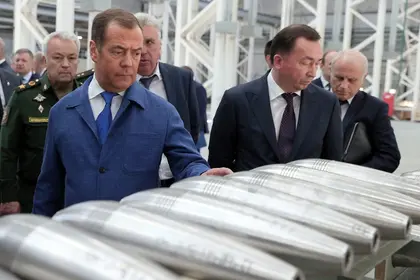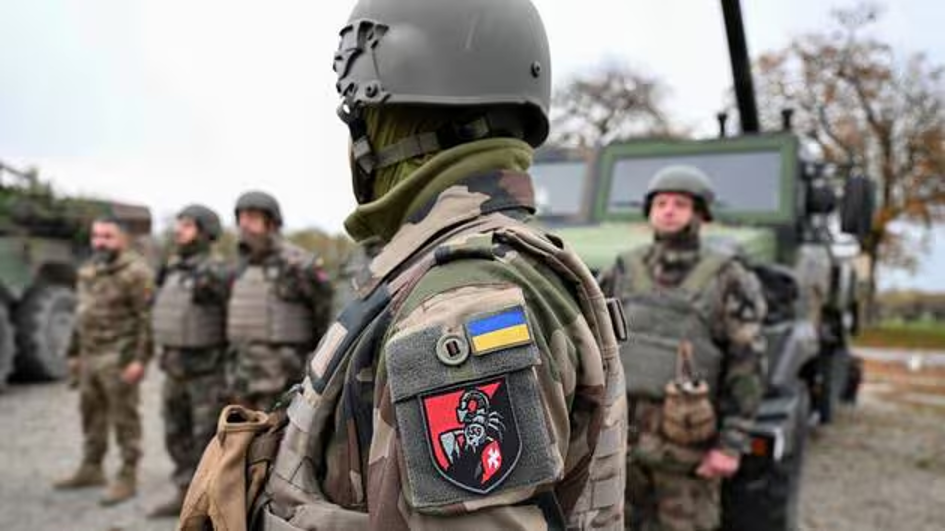During January 2022, while the Russian full-scale invasion was still a month away, Territorial Defense (TRO) was being formed into regional centers. TRO units, unlike the regular army, gathered at weekends in abandoned factories to train with real or mock-up weapons in military skills such as coordination, assault, patrolling, offense, and retreat.

JOIN US ON TELEGRAM
Follow our coverage of the war on the @Kyivpost_official.
Russian propaganda and many pro-Russian Ukrainian journalists made fun of the 50 or so men who engaged in seemingly clumsy training using wooden mock-ups of Kalashnikov assault rifles. However, the laughter would soon end – as it was these territorials who took on the might of the Russian army in the first days of the full-scale invasion, rather than regular units of the Armed Forces of Ukraine (AFU). It was mainly territorials who rebuffed the first Russian columns near Kyiv, and the regions of Chernihiv, Sumy, Shostka, Kharkiv, Mykolaiv, and Kherson.
The first strikes by these part-time soldiers against the Russian forces, who had not expected resistance, stopped and disorganized their initial assaults allowing Ukraine’s regular forces to organize their defense more effectively in the face of an invasion by a numerically vastly superior enemy.

Zelensky Huddles With European Leaders as Trump Looms
“We engaged in battle north of Chernihiv on the first or second day of the invasion. We had only one ‘boot’ (the LNG -9 –tripod mounted anti-tank grenade launcher) per platoon, and yet we managed to disrupt the first Russian column that broke through to the city on our way. Of course, when their artillery and aviation arrived, it became very difficult for all of us. Then our artillery at that time began to hit them with heavy weapons,” says Volodymyr, a soldier of one of the Chernihiv Territorial Defense Units (TDU) who only joined up two months before the invasion.

However, after the first months of containing the Russian invasion, things did not go as well for the TDUs. Many territorial brigades were no longer fighting as single cohesive units its battalions becoming “attached” forces to other units. In many sectors of the front, TDU soldiers suffered losses due to their lack of heavy weapons.
In early October 2024, Ukrainian forces were forced to leave Vuhledar because one of the battalions of the 123rd TRO brigade left its positions because its soldiers complained about the lack of weapons and ammunition.
History
The idea for forming the TRO emerged in 2008. In 2014, the first TD battalions were created. This was the heyday of volunteer formations, and the idea was well-received by society. Already in 2018, the transition to the “regional brigade” system took place, resulting in the formation of the first 25 TRO brigades - a brigade for each administrative unit of Ukraine controlled by Kyiv.
However, creating TD brigades did not mean filling them with people. Recruitment to the brigades was gradual - conscientious individuals came, sometimes businessmen, hunters, retired policemen, and so on. In the month before the Russian invasion, TRO numbers exceeded 100,000.
In some places, such as Kyiv or Chernihiv, there were stable and well-trained units that underwent many months of regular training, while in other areas, such as Kherson, newly created units struggled to receive weapons. This issue persisted even during the invasion, leading to the ineffective actions of the TRO in Kherson. In a desperate battle to stop the Russian invaders, the Kherson TD soldiers suffered heavy losses.
“Nevertheless, at the beginning of the war, the TD fulfilled its tasks - where it was deployed, the enemy either were unable or took a long time to occupy the territory with the areas later being liberated, as in Chernihiv, Kyiv, Kharkiv regions, near Sumy, and Shostka. Where the TRO units did not have time to deploy, such as in Melitopol, the actions of the Russian troops were more successful,” Anton Holoborodko, chairman of the Council of Reservists of the 112th Kyiv TD brigade told us.

Another typical example is given by Mykola Noha, the mayor of Shostka, a city in northern Ukraine.
“Thanks to the TD, we were able to block the road to the city and blow up several important bridges on the highway to Chernihiv. We lost several people then, including the battalion commander of our territorial defenses, but because of these blown-up bridges, the Russians were forced to take a detour along rural roads, losing valuable time,” the mayor says. Shostka itself was never occupied by Russian troops as its “blitzkrieg” was disrupted.
At the beginning of January 2022, territorial defense was declared a separate, distinct branch of the armed forces. These were considered to be light infantry units as they lacked heavy weapons or armored vehicles, moving in unarmored, often civilian, cars. It was assumed they would primarily perform defensive tasks within their region.
While this allowed units to rapidly deploy against the rapidly advancing Russian army but as lightly armed infantry they could not withstand enemy forces equipped with the full range of weapons and equipment for long.
“The bottom line is you sit in a trench and just catch mortars and drones dropping bombs, meaning you're a target for enemy strikes. And in principle, this is the infantry's task. The problem is that we are light infantry. It is extremely difficult to handle logistics with unarmored vehicles, and it's hard without our own artillery or UAV units,” says Andrii, a volunteer in a TD brigade who has been fighting since the first days of the war.
One of the volunteers of the Kyiv TD brigade, who trained for several years before the full-scale invasion with the TD and now fights in another unit of the AFU, Oleksandr Pechalow, believes that the territorial defense did not have enough time to form before the invasion fully.
“It seems that from the beginning the TRO didn't have time to form, and it was necessary to plug gaps at the front. That's how I ended up in Irpin and the Kharkiv region, defending the Solomiansky District of Kyiv,” Oleksander says half-jokingly.

The case of the 123rd Brigade near Vuhledar again sparked discussions in military and volunteer circles: what should be done with the TRO?
Is there a future for Light Infantry?
It seems the obvious choice is to arm TRO units at the same level as other mechanized formations. The problem is that these formations also need replenishment.
“The problems in mechanized units, such as organization or bureaucracy, are the same as in the TD. It’s just that there are more former civilians in the TD, so we hear more about these problems. The idea of arming everyone is good, but in general, this will not lead to more weapons in the army,” says Serhiy Kuzan, a military analyst and former adviser to the commander of the AFU TRO.

There have even been calls to disband TRO forces and merge them into existing brigades. According to Anton Holoborodko, light infantry can still act effectively in positional warfare - the key is using it properly.
“It’s a tool. Every tool has its purpose. There’s no need to disband anything, we just need to use light infantry where it is effective. Everyone is discussing a few cases where it wasn’t effective, but right now, there are many sections of the front where TD forces are successfully fighting, saving the heavily armed brigades of the Armed Forces of Ukraine,” Holoborodko says.
For example, territorial defense battalions are often used as “auxiliaries” alongside other units, playing a supporting role or even taking the lead.
“The main task of any commander is to protect the personnel and combat capability of his unit. It sometimes happens that the main division is prioritized, but the auxiliary division is treated as expendable and put in difficult positions so the main unit isn’t ‘spent.’ My understrength battalion was once positioned against two heavily armed Russian regiments, and we had to hold the area,” says Andrii, a former TD battalion commander.
These situations, according to Serhiy Kuzan, are forced onto commanders. It’s not ideal, but it’s important to understand that these decisions aren’t made lightly. “The command doesn’t have a biased attitude toward the TD or other forces, that’s for sure. But if the front needs to be held while reserves are trained or mobilized, it will be held with whatever is available,” Kuzan says.
It’s also difficult for TD soldiers to transfer to better-armed units because these units are replenished more slowly. Commanders don’t always let personnel go.
“The reason is simple- insufficient personnel. Where do you find replacements when no one is coming? Yet the tasks require a full unit,” says Vadym, an officer of one of the TRO brigades fighting in the southern direction.
The only thing all those interviewed agree on is that the future of the TD depends on the supply of suitable Western and Ukrainian weapons and the replenishment of forces through mobilization.
If this happens, it will be possible to use TD where it can be most effective, rather than where it is most urgently needed. However, one role of territorial defenses that has recently been forgotten is their media and propaganda role, which was prominent at the start of the war.
The mass enlistment of civilians, from PHDs to club DJs, and numerous interviews with them, demonstrated the will of all strata of Ukrainian society to fight for freedom and independence. Even now, two and a half years later, former TRO fighters remember this atmosphere fondly.
“The great thing about it was the people. In my unit, the only person missing was a Nobel laureate; everyone else was there,” Pechalov recalls.
You can also highlight the text and press Ctrl + Enter







